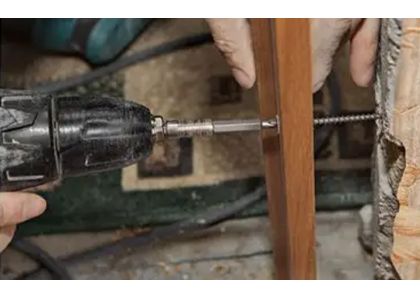
The main function of a screw is to fix and connect objects, keeping them stable and firm.
I. The function of a screw
A screw is a commonly used tool, mainly used for fixing and connecting objects. Its functions can be manifested in the following aspects:
1. Fixation: Screws can be used to fix objects. For example, screws can be used to fix the angle steel of furniture, thus preventing the furniture from shaking.
2. Connection: The function of screws also lies in connecting objects. For example, screws can be used to connect two pieces of wood, thus achieving the splicing of the wood.
3. Adjustment: The grooves of the screw can enable the fastener to make positional adjustments. For example, by rotating the screw, the details of adjustment can be fine-tuned.
II. Types of screws
There are many types of screws, and different screws are suitable for different application scenarios. Here are several common types of screws:
1. Tight connection screws: These screws are usually used in situations where materials with higher priority for resistance to tension, compression, or shear force are required.
2. Machine screws: These screws have a wide range of applications and are used in various fields such as machine manufacturing, vehicle maintenance, and electronic manufacturing.
3. Wood screws: These screws are usually used for wooden furniture or wooden buildings.
4. Drywall screws: These screws are usually used for installing ceilings or home decoration.
III. What to pay attention to when using screws?
When using screws, the following matters need to be noted:
1. Select the right screw: Different screws are suitable for different scenarios. It is necessary to select the appropriate screw according to the actual situation.
2. Control the force: When tightening the object, the force needs to be controlled. Excessive force should not be applied. This can ensure a more stable fixation effect.
3. Pre-drill holes: When using nails, it is usually necessary to pre-drill holes. This can avoid damage to the material due to excessive tightening.
4. Check the screw condition: Regularly check the condition of the screw to prevent rust or damage of the screw, which may cause damage to the product.